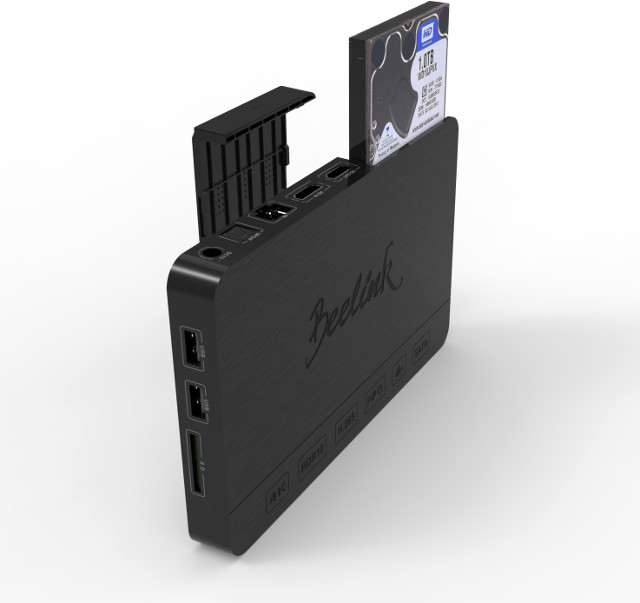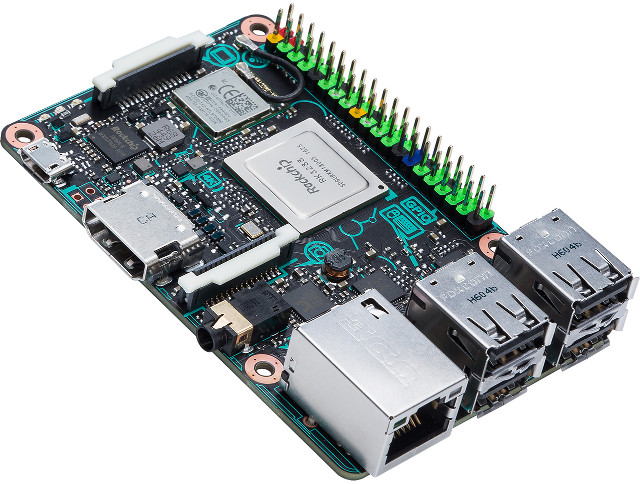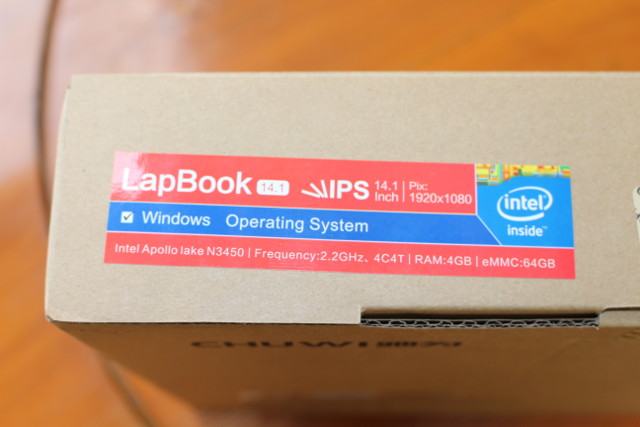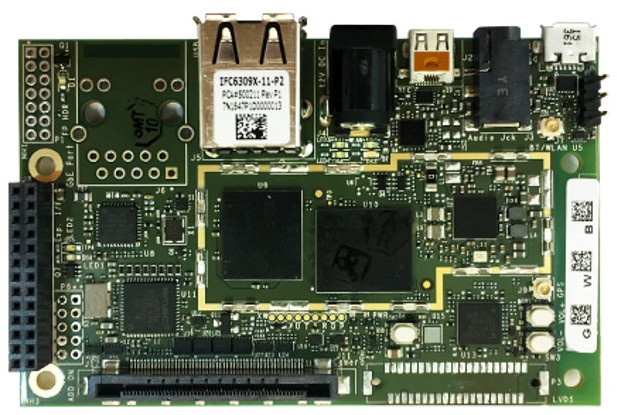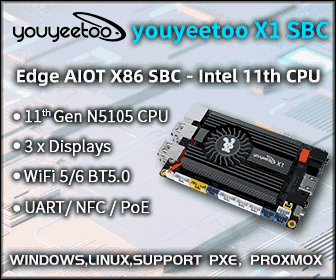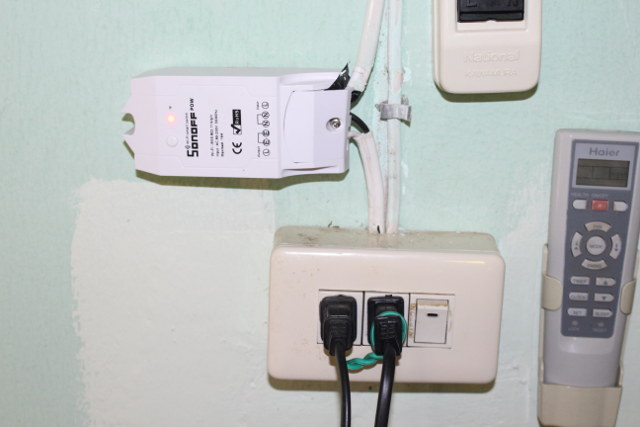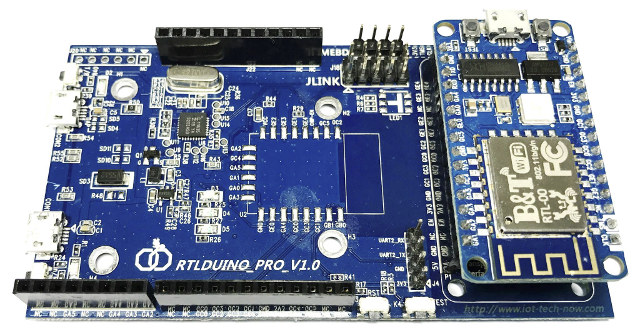I’ve already reviewed two Android TV boxes powered by Realtek RTD1295 processor, namely Zidoo X9S and EWEAT R9 Plus. They are quite interesting devices as beside supporting video & audio playback nicely (minus 4K H.264 @ 30fps), they also serve as a personal NAS thanks to their SATA interface and OpenWrt operating system running alongside Android, as well as a HDMI recorder and streamer thanks to the HDMI input. Zidoo firmware is a little better, but it only comes with external SATA, while EWEAT R9 Plus comes with a neat internal 3.5″ SATA bay inside a metal case. The downside is that it’s quite expensive at $200 shipped. If you’d like a Realtek RTD1295 solution with a SATA bay, but would like something more cost effective, Beelink SEA TV box with might be for you. Beelink SEA specifications: SoC – Realtek RTD1295 quad core ARM Cortex-A53 processor @ 1.4 GHz […]
ASUS Tinker Board’s Debian & Kodi Linux Images, Schematics and Documentation
We discovered ASUS Tinker Board powered by Rockchip RK3288 processor earlier this year via some slides hidden in a dark corner of the Internet… ASUS has been incredibly quiet about it, but as the board has finally started to sell in Europe on sites like CPC Farnell UK, Proshop (Denmark), or Jimm’s (Finland) for the equivalent of $57.5 without VAT or $69 including VAT, and more technology sites have started to write about it. So people have been buying the board, and one even uploaded an unboxing video. One interesting part is the the top comment from the uploader in that video: Currently, a £55 paperweight as I can’t seem to find a link to the OS image anywhere. And indeed, ASUS appears to have launched a board without any support website, firmware image and documentation. Maybe that’s why they are quiet about it. But after using some of my […]
CHUWI LapBook 14.1 Apollo Lake Laptop Review – Part 1: Unboxing & (Partial) Teardown
CHUWI LapBook 14.1 is one the first Intel Apollo Lake laptop launched in the market. It features an Intel Celeron N3450 quad core processor coupled with 4GB RAM and 64GB storage, and comes with a 14.1″ Full HD IPS Display. The company sent me a sample for review, and I’ll start by checking out the hardware today, before running some tests in Windows 10, and trying to install Ubuntu 16.04 later on. CHUWI LapBook 14.1 Unboxing I received the device in what looks like CHUWI standard package for 14″ laptops, but a sticker on the stop made it clear which model I got.The laptop comes with a 12V/2A power supply and power cord, a user manual in English and Chinese, a warranty card, and a product inspection report. The laptop battery is nearly fully charged, so I started it. I could not find any keys to adjust the display brightness, […]
Linux.conf.au Linux Conference Australia Videos Uploaded to YouTube
Linux.conf.au is a Linux conference that takes place yearly in Australia or New Zealand. This year, the event took place on January 16-20 in Hobart in Tasmania, and the schedule was divided into 6 categories/rooms: Sysadmin, WOOTConf, Open Knowledge, Kernel, Games and FOSS, and Open Radio. There was not that many talks related to embedded or dev boards, but some notable sessions included “Building Escape Room Horror Experiences with Arduino and C++“, “Decoding Satellites with SatNOGS“, or “My adventures building hamlib support for the OpenSDR board” among others. The organizers have now uploaded videos of the talks in Youtube with one session embedded below. Via Phoronix
GOLE360 360 Degrees Video Camera Works with Android Smartphones and in Standalone Mode
GOLE is better known for their mini PC tablet combos like GOLE1 and GOLE1 Plus, but the company is about to launch GOLE360 360 Degree Panorama VR Action Camera looking very similar to Insta360 Nano camera, but instead of being designed for iPhones, they made is for Android smartphones with either a micro USB port, or a USB type C port. GOLE360 camera specifications: SoC – InfoTM C23 32-bit processor @ up to 600MHz with 128MB RAM on-chip Storage – micro SD slot up to 128GB Camera 4 MP sensor Camera lens: aperture F2.4, focuses: Efl 0.94, angle: 210o Video – H.264/MOV up to 1920×960@30fps /1472×736@30fps Photo – JPEG @ 3008×1504 /1920×960 USB – 1x micro USB 2.0 port, or 1x USB 2.0 type C port depending on model Battery – 3.7V/800mAh Dimensions – 11.68 x 3.7 x 2.2cm The camera runs Linux 3.10. This is not the first 360 […]
Inforce 6309L Board is Powered by Qualcomm Snapdragon 410E Processor with 10-year Availability
Inforce Computing launched 6309 micro single board computer powered by Snapdragon 410 processor, and compatible with 96Boards Dragon 410c board, a little over a year ago. The company has sent a newsletter promoting the launch of cost-down version with long term support equipped with Snapdragon 410E processor, and named Inforce 6309L. Comparison table between Inforce 6309L board and DragonBoard 410C provided by the company: Inforce 6309L Dragonboard 410C SoC Qualcomm Snapdragon 410E quad core ARM Cortex A53 processor with Adreno 306 GPU Dimensions 54mm x 85mm Memory Storage 1GB LPDDR3 8GB eMMC Micro SD Connectivity Wi-Fi/BT/GPS Video 1080p HD video 720p HEVC playback Camera Dual cameras 13MP on MIPI-CSI Interfaces Micro USB, USB, Micro HDMI, MIPI-CSI, expansion header Micro USB, USB, HDMI, expansion header Operating System Android Lollipop 5.1 Linux (Debian) Win10 IoT core Both boards are pretty similar, except Inforce 6901L replaced the HDMI port with a mico HDMI […]
How to use Sonoff POW with ESPurna Firmware and Domoticz Home Automation System
Sonoff POW is an ESP8266 based wireless switch with a power meter that comes pre-loaded with a closed-source firmware that works with eWelink app for Android or iOS by default. But we’ve also seen Sonoff POW, and other Sonoff wireless switches from the same family, can be flash with open source firmware supporting MQTT (Message Queuing Telemetry Transport) lightweight messaging protocol such as ESPurna, and I initially sent data from Sonoff POW to ThingSpeak via an MQTT broker (mosquitto) to draw some pretty charts. I did that with the switch connected to a lightbulb, but I’ve since installed Sonoff POW in my office to measure the room’s power consumption minus the ceiling light and aircon as shown below. Sonoff cable mechanism is really a pain for hard copper wires, as they are hard to push inside the mechanism, and something come out. I finally managed by it took longer than […]
RTL8710 Ameba Arduino Development Board and Ameba Arduino v2.0.0 SDK Released
We’ve already seen a NodeMCU lookalike board called RTLDuino based on Realtek RTL8710AF ARM Cortex M3 WiSoC earlier this month, that can be programmed with a community supported Arduino port also called rtlduino via a JLink SWD debugger, but now Realtek has just launched Ameba RTL8710 Arduino board, and released Ameba Arduino v2.0.0 SDK which brings official Arduino support to RTL8710AF platforms. There appears to be two versions of the development kit: RTLDUINO_PRO_V1.0 and REALTEK-AMEBA_RTL8710_V2.0, but based on the user manual they seem to be identical, and as you can see from the above picture, it includes a baseboard and the aforementioned RTLDuino board. RTL8710 Ameba Arduino HDK key features: SoC – Realtek RTL8710AF ARM Cortex-M3 MCU @ 83 MHz with 802.11 b/g/n WiFi, hardware SSL engine connected to the baseboard via: RTLDuino board through female header B&T RTL-00 module soldered on module footprint USB – 2x micro USB ports, […]


